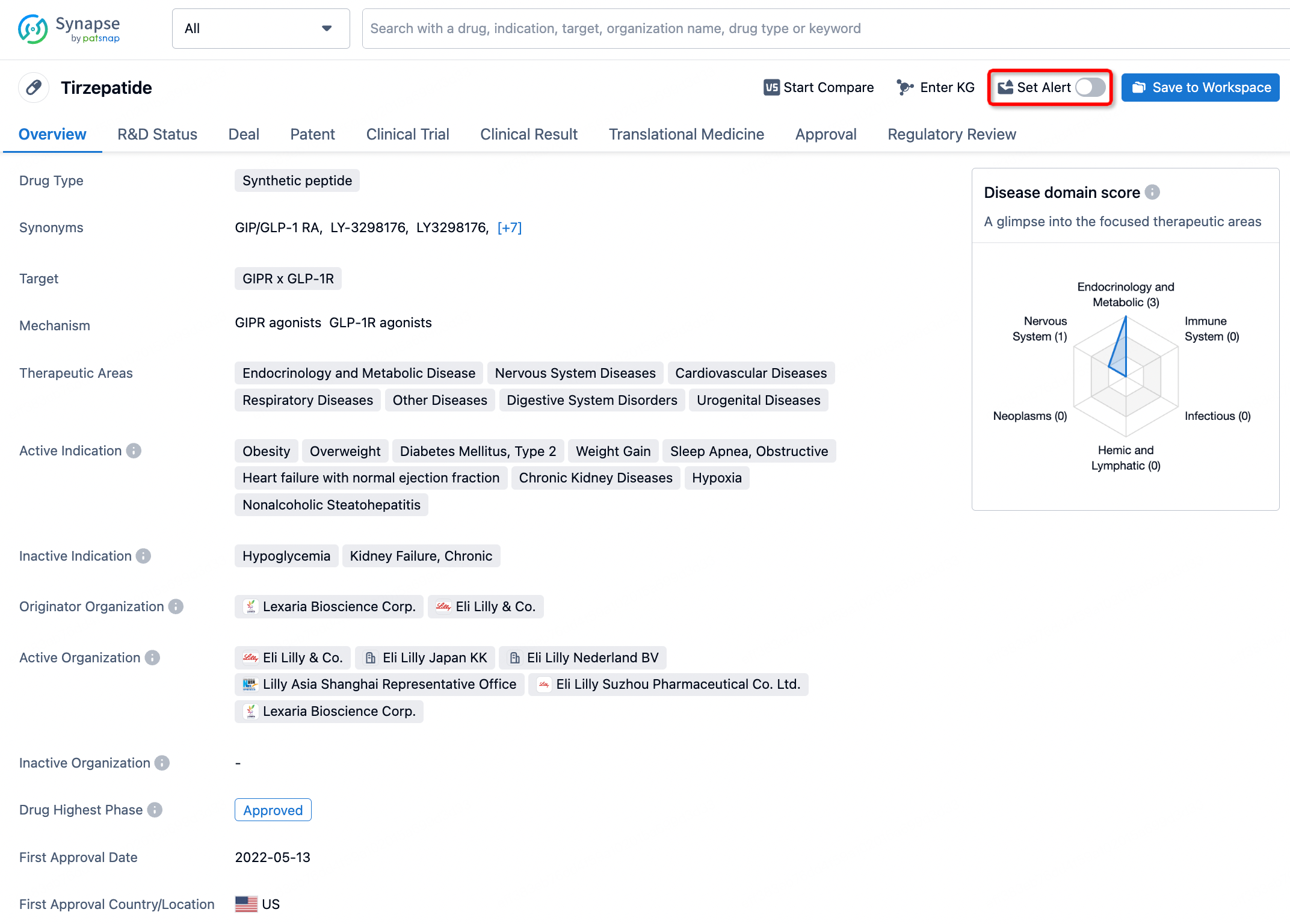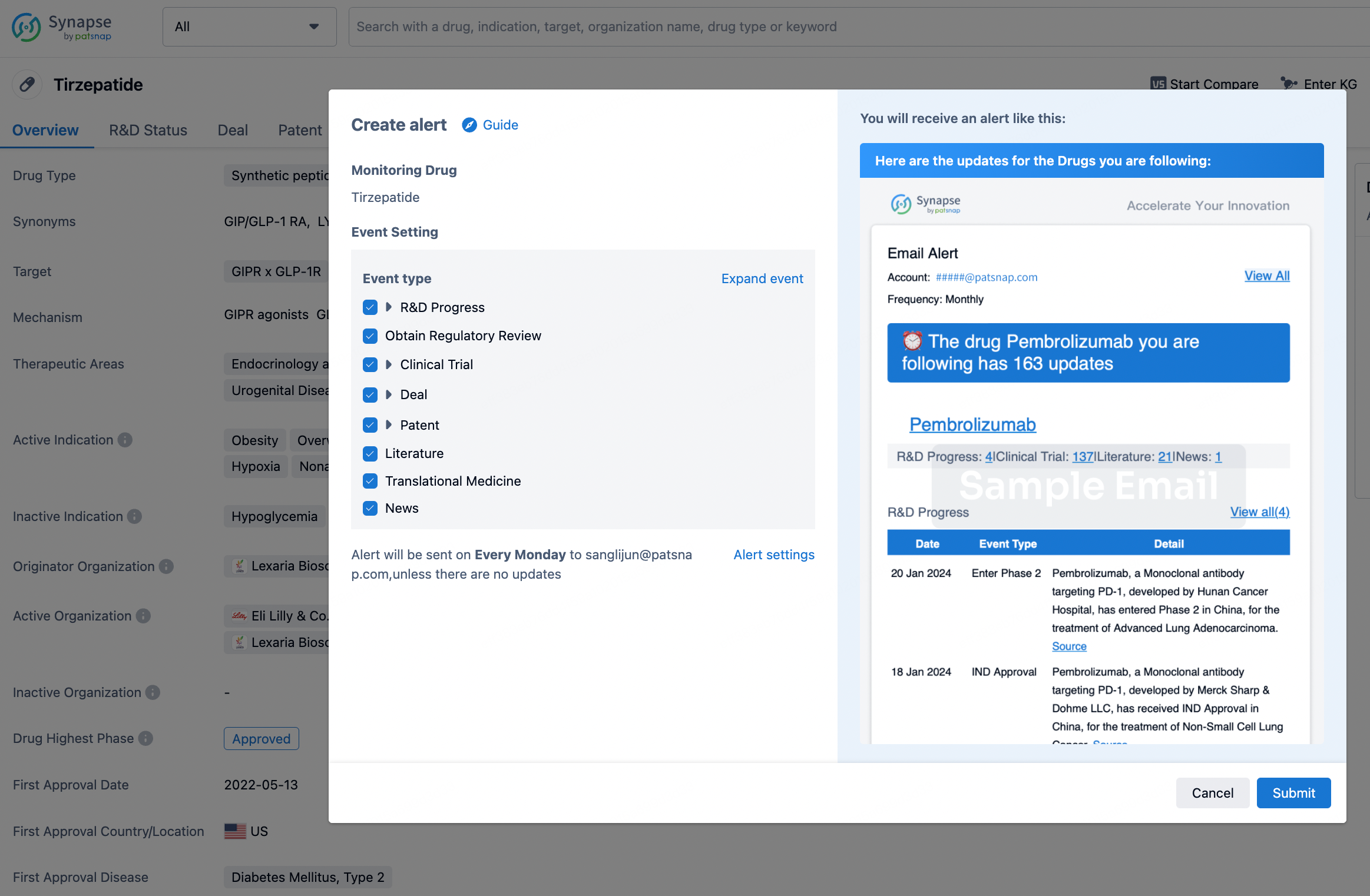Request Demo
What is the mechanism of Moxaverine Hydrochloride?
18 July 2024
Moxaverine Hydrochloride is a vasodilator that is primarily used in the treatment of peripheral and cerebral vascular disorders. Its mechanism of action is multifaceted, involving multiple biochemical pathways to achieve its therapeutic effects.
The primary mechanism by which Moxaverine Hydrochloride operates is through the inhibition of phosphodiesterase (PDE) enzymes, particularly PDE3 and PDE4. Phosphodiesterase enzymes are responsible for breaking down cyclic adenosine monophosphate (cAMP) and cyclic guanosine monophosphate (cGMP), which are intracellular messengers that play critical roles in various physiological processes. By inhibiting these enzymes, Moxaverine Hydrochloride increases the levels of cAMP and cGMP within cells. Elevated levels of these cyclic nucleotides lead to the relaxation of smooth muscle cells, thereby causing vasodilation. This vasodilatory effect helps to improve blood flow in the affected vascular territories, which is particularly beneficial in conditions involving compromised blood circulation.
Another significant aspect of Moxaverine Hydrochloride's action is its effect on calcium ions within cells. The influx of calcium ions into smooth muscle cells is a key factor that triggers muscle contraction. Moxaverine Hydrochloride interferes with this calcium influx, thereby reducing muscle contraction and promoting relaxation. This calcium antagonistic property further complements its vasodilatory effects, enhancing blood flow and oxygen delivery to tissues.
In addition to these primary mechanisms, Moxaverine Hydrochloride also exhibits anti-inflammatory properties. Inflammation can exacerbate vascular disorders by promoting vasoconstriction and increasing vascular permeability. Moxaverine Hydrochloride's ability to inhibit the production of pro-inflammatory cytokines and other mediators helps to mitigate these effects, thereby contributing to its overall therapeutic efficacy.
Moxaverine Hydrochloride has also been reported to have neuroprotective effects, particularly in the context of cerebral ischemia. By improving cerebral blood flow and reducing the extent of ischemic damage, it helps to preserve neuronal function and prevent irreversible damage to brain tissue. This makes it a valuable agent in the management of cerebrovascular diseases such as stroke and transient ischemic attacks.
The pharmacokinetics of Moxaverine Hydrochloride are characterized by its rapid absorption and extensive distribution in the body. It is metabolized primarily in the liver and excreted through the kidneys. The drug's half-life allows for sustained therapeutic levels with regular dosing, ensuring consistent efficacy in managing vascular disorders.
In conclusion, Moxaverine Hydrochloride is a versatile vasodilator that operates through multiple mechanisms to exert its therapeutic effects. By inhibiting phosphodiesterase enzymes, modulating calcium influx, and exhibiting anti-inflammatory and neuroprotective properties, it effectively manages peripheral and cerebral vascular disorders. Understanding these mechanisms provides valuable insights into its clinical applications and potential benefits in improving vascular health.
The primary mechanism by which Moxaverine Hydrochloride operates is through the inhibition of phosphodiesterase (PDE) enzymes, particularly PDE3 and PDE4. Phosphodiesterase enzymes are responsible for breaking down cyclic adenosine monophosphate (cAMP) and cyclic guanosine monophosphate (cGMP), which are intracellular messengers that play critical roles in various physiological processes. By inhibiting these enzymes, Moxaverine Hydrochloride increases the levels of cAMP and cGMP within cells. Elevated levels of these cyclic nucleotides lead to the relaxation of smooth muscle cells, thereby causing vasodilation. This vasodilatory effect helps to improve blood flow in the affected vascular territories, which is particularly beneficial in conditions involving compromised blood circulation.
Another significant aspect of Moxaverine Hydrochloride's action is its effect on calcium ions within cells. The influx of calcium ions into smooth muscle cells is a key factor that triggers muscle contraction. Moxaverine Hydrochloride interferes with this calcium influx, thereby reducing muscle contraction and promoting relaxation. This calcium antagonistic property further complements its vasodilatory effects, enhancing blood flow and oxygen delivery to tissues.
In addition to these primary mechanisms, Moxaverine Hydrochloride also exhibits anti-inflammatory properties. Inflammation can exacerbate vascular disorders by promoting vasoconstriction and increasing vascular permeability. Moxaverine Hydrochloride's ability to inhibit the production of pro-inflammatory cytokines and other mediators helps to mitigate these effects, thereby contributing to its overall therapeutic efficacy.
Moxaverine Hydrochloride has also been reported to have neuroprotective effects, particularly in the context of cerebral ischemia. By improving cerebral blood flow and reducing the extent of ischemic damage, it helps to preserve neuronal function and prevent irreversible damage to brain tissue. This makes it a valuable agent in the management of cerebrovascular diseases such as stroke and transient ischemic attacks.
The pharmacokinetics of Moxaverine Hydrochloride are characterized by its rapid absorption and extensive distribution in the body. It is metabolized primarily in the liver and excreted through the kidneys. The drug's half-life allows for sustained therapeutic levels with regular dosing, ensuring consistent efficacy in managing vascular disorders.
In conclusion, Moxaverine Hydrochloride is a versatile vasodilator that operates through multiple mechanisms to exert its therapeutic effects. By inhibiting phosphodiesterase enzymes, modulating calcium influx, and exhibiting anti-inflammatory and neuroprotective properties, it effectively manages peripheral and cerebral vascular disorders. Understanding these mechanisms provides valuable insights into its clinical applications and potential benefits in improving vascular health.
How to obtain the latest development progress of all drugs?
In the Synapse database, you can stay updated on the latest research and development advances of all drugs. This service is accessible anytime and anywhere, with updates available daily or weekly. Use the "Set Alert" function to stay informed. Click on the image below to embark on a brand new journey of drug discovery!
AI Agents Built for Biopharma Breakthroughs
Accelerate discovery. Empower decisions. Transform outcomes.
Get started for free today!
Accelerate Strategic R&D decision making with Synapse, PatSnap’s AI-powered Connected Innovation Intelligence Platform Built for Life Sciences Professionals.
Start your data trial now!
Synapse data is also accessible to external entities via APIs or data packages. Empower better decisions with the latest in pharmaceutical intelligence.


